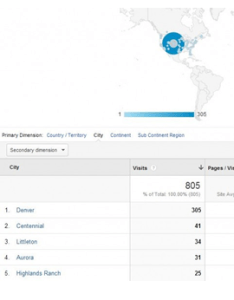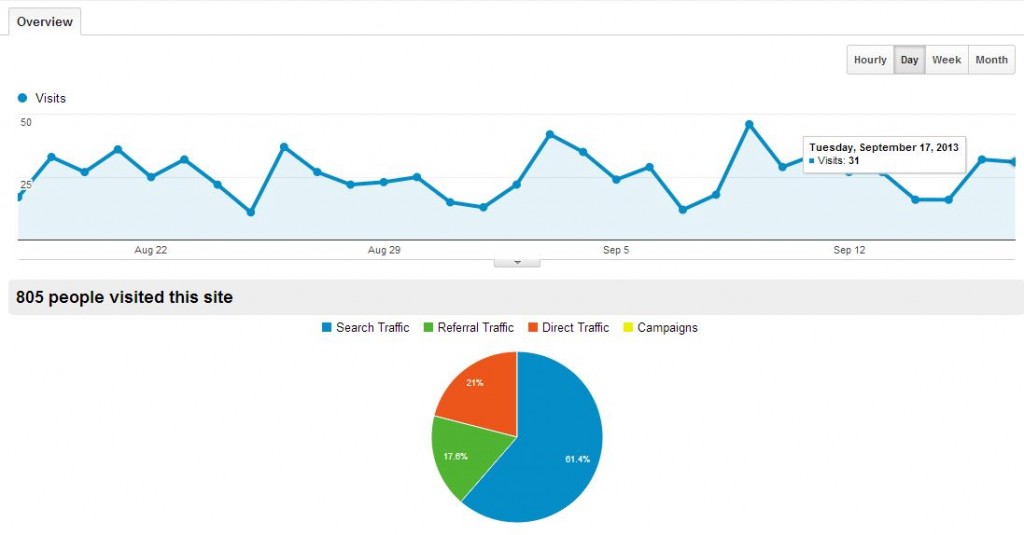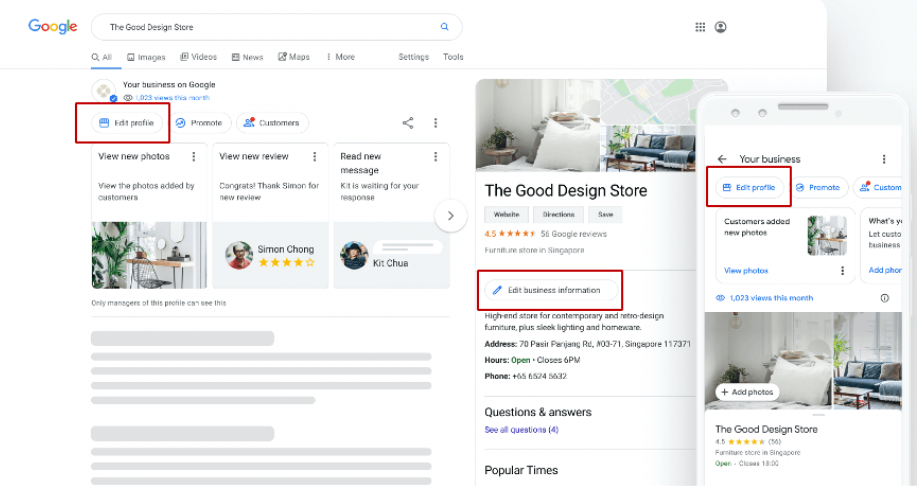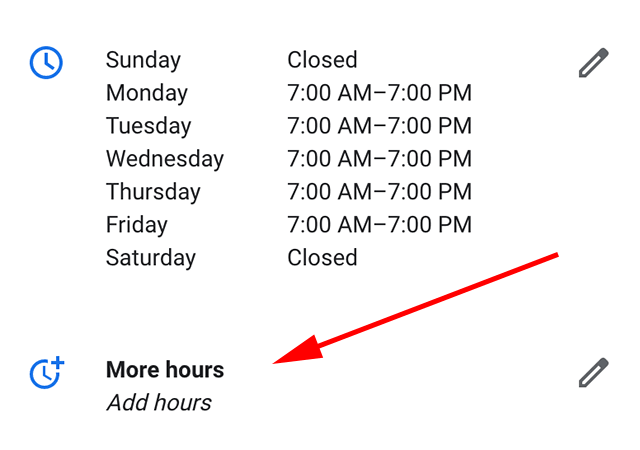 As a Local Business SEO provider, we understand that many of our clients are unique. Each provides different products and services, serves different markets, and benefits from different customer bases, advertising strategies and social media reach.
As a Local Business SEO provider, we understand that many of our clients are unique. Each provides different products and services, serves different markets, and benefits from different customer bases, advertising strategies and social media reach.
The success of any local business website hinges on attracting the right type of visitor and allowing them to easily obtain the information they’re looking for to move forward with a purchase. Analytics provide local businesses with the constant supply of data they need to evaluate their approaches and take action to improve their website experiences.
Many businesses rely on Google Analytics and similar offerings for website analytics. Below are the key metrics local businesses should evaluate in order to track the performance of their websites, and inform their strategies and plans for improvement.
Attracting And Engaging The Right Audience
It’s easy to look straight at metrics like Visits and Unique Visitors to evaluate a website’s performance. The more people looking at the website, the better, right? On the one hand, yes — especially if a business is investing in SEO/SEM, online and mobile advertising, and/or social media designed to get consumers to visit its website. But those metrics alone provide very limited perspective and can be extremely misleading if viewed out of context.
It’s vital to narrow in on additional audience metrics and collectively evaluate the types of visitors and their engagement to determine whether the website is being effective:
- Demographics: Are most visitors from the local area — meaning they are potential customers — or are they individuals in far-off places who stumbled upon the site but likely won’t ever engage the business? It’s key to understand whether the right consumers are making it to the site. If only a handful of total website visits come from local consumers, the business needs to evaluate its SEO/SEM approach.
- New vs. Returning: Depending on the type of local business, one might be more preferable than the other. A homebuilder may be more interested in attracting new eyeballs to his website to see his latest projects and offerings, while a local shop owner with an online store may value a more balanced mix of new and returning customers. For businesses that want returning visitors but aren’t attracting them, they need to evaluate what, if anything, they are doing to encourage past visitors to come back. They may need to employ advertising, promotions or other incentives to get them there.
- Engagement: The length of time a visitor stays on a website is an important indication of whether the site is attracting the right type visitor and if it’s set up in an engaging way that keeps the visitor there to learn more. If a majority of website visitors leave within the first 10 seconds of reaching the site, one or both of these issues need to be addressed.
- Bounce Rate: Similar to engagement, this indicates the percentage of visitors who left the site without moving on to another page from the one they landed on. A high bounce rate means the site is failing to entice visitors to stay and learn more about the business.
- Mobile: Evaluating performance indicators for those accessing the site through desktop, mobile or tablet is valuable in determining whether the site is properly optimized for each platform. But it isn’t just about taking desktop website content and reformatting it in a mobile-friendly way. Local businesses need to think through their mobile and tablet experiences to determine what website information and flow is best in each of these settings.
Ensuring Busy Traffic Sources
Google Analytics provides insights into the four website traffic sources: search traffic, referral traffic, direct traffic and campaigns. Building strong bridges for these traffic sources is often a challenge and requires constant review and adjustment:

- Search Traffic: Which keywords drive the most traffic to the website and keep the most visitors engaged for the longest period of time? Which search engines are the biggest traffic drivers? What landing pages attract the most search traffic? Whether focused on organic or paid search, metrics in these areas help businesses to evaluate the most effective language to get the right visitors to the right pages on their site. For example, if an auto repair business is seeing considerable traffic to its oil change page, it would benefit from building out that section as much as possible and adding coupons or other incentives to further drive business.
- Referral Traffic: Referral traffic is a strong indication of whether the website is successfully integrated with the business’ social media channels, listed in online directories, and featured in appropriate news media and blogs. For example, if a business promoting its website on Facebook is seeing a lot of traffic come through, but those visitors are clicking out of the site once they arrive, the business needs to address why visitors aren’t finding the content they were looking for. (Are the Facebook posts misleading? Does the website not explain the product clearly?)
- Direct Traffic: Leveraging offline opportunities to promote a website — posting the URL address throughout the store, featuring it in direct mail, including it in newspaper ads, etc. — are key to driving up this metric. It’s beneficial for businesses to have a website URL that users can easily remember and type in. If the share of direct traffic from total traffic is high, however, it is also an indication that search and referral traffic levels are not up to par.
- Campaigns: Ensuring that paid advertising is resulting in the right type of visitor for the cost involved is critical. If a business is paying to attract visitors, it better receive a higher return on its investment, or reevaluate the approach.
Developing The Best Content
Evaluating the effectiveness of content provides a broad view of which website pages are doing well, which are not, and whether the site is flowing in a way that keeps visitors engaged and calls them to make the desired action. Key considerations include:
- While a website’s homepage will generally receive the most traffic, if there are other critical sections of the site that provide key information but are not being visited, there’s a problem. The homepage may need to be reconfigured from a content and/or design perspective to better incentivize visitors to visit specific sections.
- Each website page should be regularly evaluated for its effectiveness. Are page visitors being directed by the right traffic sources on a consistent basis? Are they spending the right amount of time on those pages? Are they moving forward to other pages and completing calls-to-action as the business would hope?
- Narrow in on pages where visitors are dropping off and determine why. Perhaps a website gets visitors as far as its products page, but is unable to convert them to the purchase page. The business may experiment with better integrating the purchase information into the product page, so that users see everything all at once and are more inclined to move forward. For example, perhaps once visitors see that the business accepts a certain form of payment, or offers free shipping, they would more willing to move forward with the purchase.
The metrics listed above are only a snapshot of what’s available, and there are countless other examples and considerations for why certain aspects of websites work and others don’t. That’s why having a better understanding and appreciation for analytics is so important. Such metrics provide critical value in building a more complete and effective website.
At Marketing Type Guys we know and love Google Analytics, and its why we encourage all of our customers to use this free tool. Contact us to learn how you can easily employ analytics on your website!
Special thanks to Wesley Young for most of the content to this article.



